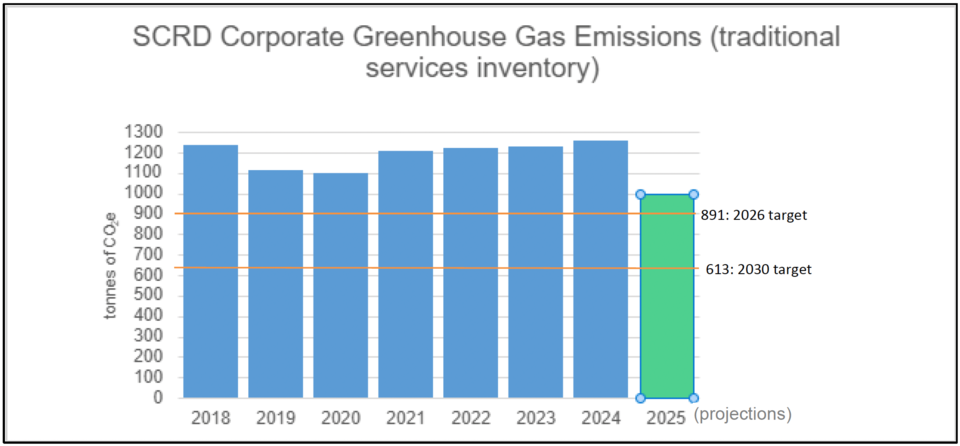More reductions are needed if the Sunshine Coast Regional District is to meet its target of reducing its corporate greenhouse gas (GHG) emissions by 20 per cent from 2019 levels by 2026 –– but there’s hope.
Sunshine Coast Regional District directors received their annual corporate emissions report at the July 10 committee of the whole.
The goal is to have 891 tonnes of corporate CO2 emissions in 2026, last year it is estimated the SCRD produced more than 1,200 tonnes.
Natural gas used at local pools is the primary source of emissions (recreation services accounts for 55 per cent of emissions), followed by the SCRD’s fleet of vehicles and contractors’ fuel use. The Sechelt pool alone created just under 400 tonnes of emissions last year.
Water services account for two per cent of corporate emissions.
But, over the past year, several projects have reduced emissions. According to analysis: the Sechelt pool’s heat pump replacement and solar thermal system replacement in November reduced overall corporate emissions by 15 per cent, said the staff report. Electrification of the Sechelt dump will reduce emissions by three per cent.
Projects under way may enable a reduction to 1,000 tonnes by the end of 2025, but 110 more tonnes of emissions are required to reach the 2026 target, said the report.
Opportunities identified in 2023 include electrification of transit (which is outside the boundaries of this plan but provide opportunity for SCRD reductions), increasing facility maintenance capacity and project management capacity and replacing fossil fuel heating at one of the pools with low or zero-emission tech.
Directors floated ideas of looking into co-locating larger recreational buildings (for example, the separately owned Gibsons Curling Club and Gibsons pool) as a future area for emissions savings.
The report was received for information.



